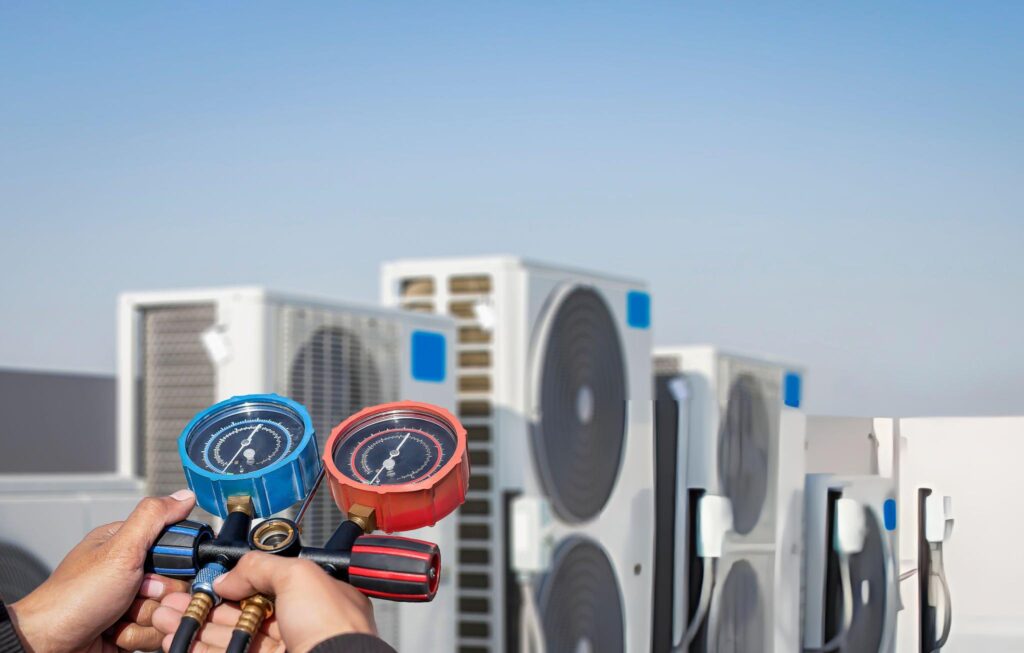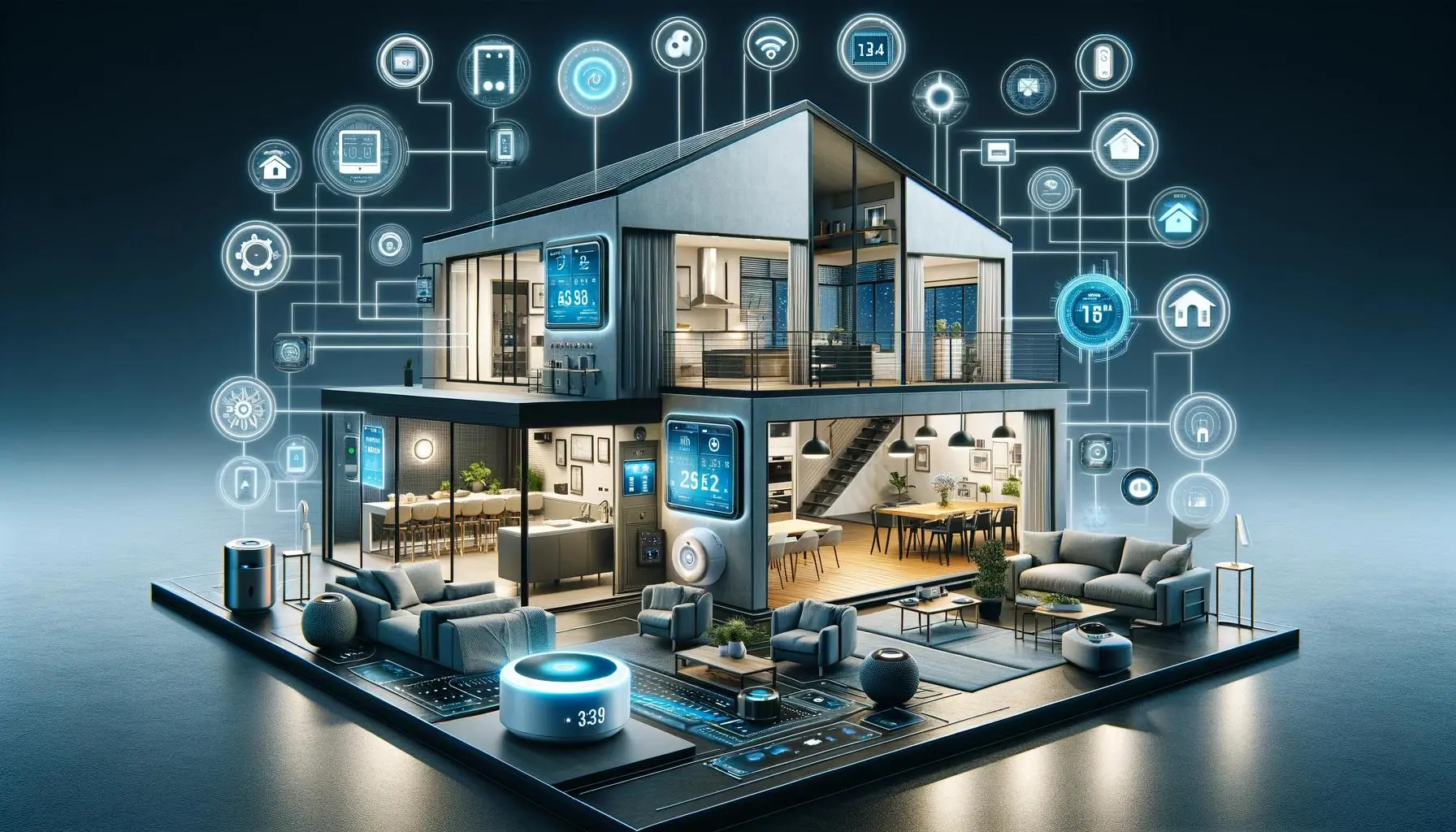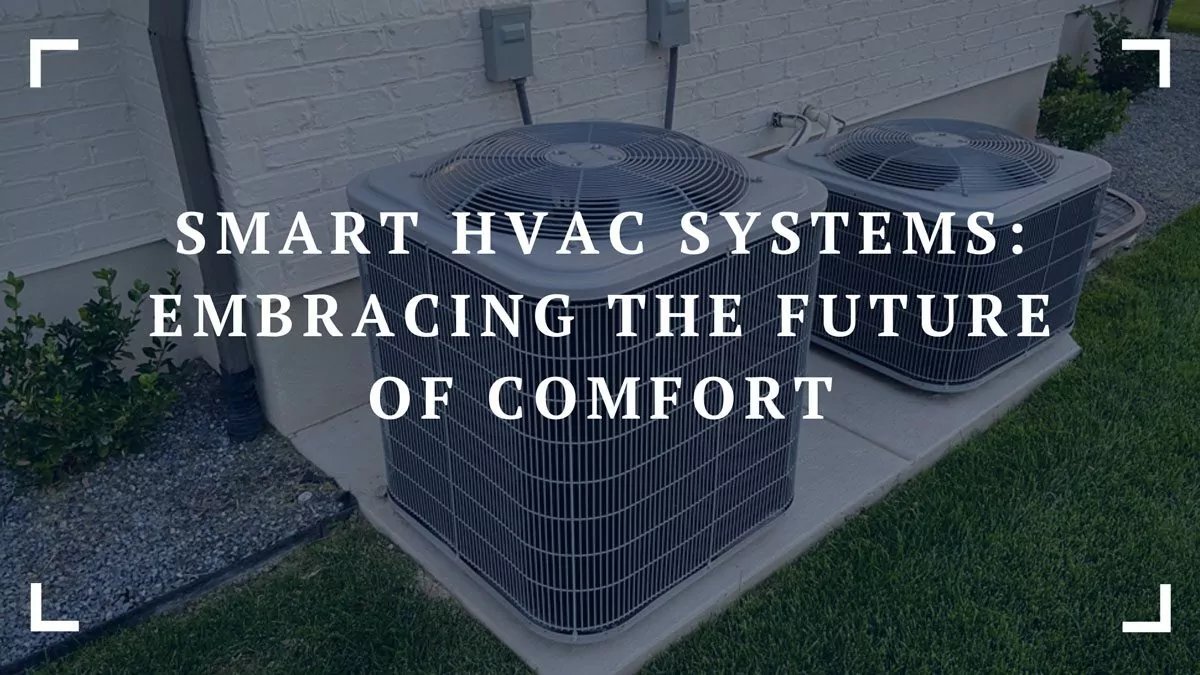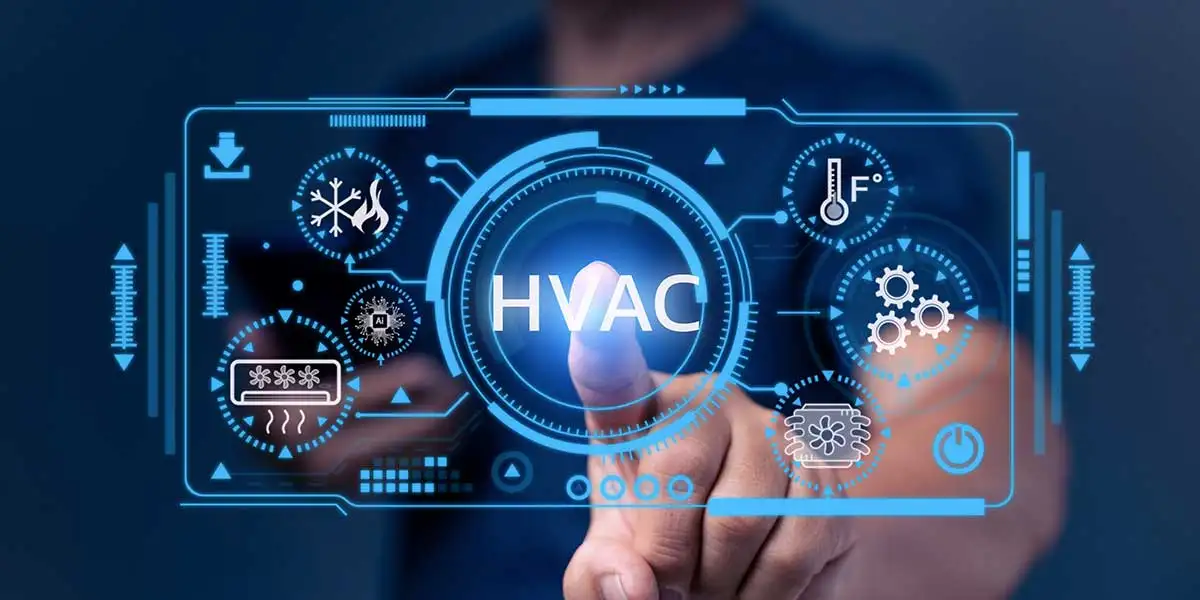The Ultimate Guide to Energy-Efficient Climate Control in 2025
Rethinking Comfort — Why 2025 Is the Turning Point for Smarter HVAC
The World Is Heating Up, and So Are Our Priorities
By 2025, the topic of climate control in our homes has expanded beyond simply keeping warm in the winter or cool in the summer. It’s about sanity, savings, and sustainability. Homeowners are at last realizing a contemporary reality in urban areas, suburbs, and even rural areas:
Comfort is a tactic, not just an emotion.
The days of having an inefficient wall-mounted air conditioner or an outdated rattling furnace in the basement are long gone. Your HVAC system should be able to do more these days. A lot more. It should anticipate, adapt, conserve, and—above all—work for you rather than against the environment or your pocketbook.
Thus, it is true that smart kitchens are not the way of the future.
Now that they’re here, it’s time to create something amazing.
Why Energy Efficiency Isn’t Optional Anymore
Energy prices are no longer acceptable background noise on your utility bill, let’s face it. They are prominent, and their numbers are only growing.
The average American household’s energy expenditures increased by 17% in 2024 alone (source). The criminals? Poor smart home integration, antiquated insulation, ineffective HVAC systems, and a lack of proactive climate control.
But here’s the truth:
An efficient HVAC system is no longer a luxury — it’s your home’s beating heart.
Understanding the “E” in HVAC: Energy, Economy, and Ecosystem
Energy-efficient HVAC isn’t just a buzzword. It’s a triple win for:
-
Your wallet: Lower energy bills
-
Your planet: Reduced carbon footprint
-
Your lifestyle: Consistent, optimized indoor comfort
Here’s what a typical shift from traditional HVAC to high-efficiency systems looks like:
| Feature | Old HVAC | 2025-Era Efficient HVAC |
|---|---|---|
| SEER Rating | 8–13 | 18–25+ |
| Smart Thermostat | Rare | Standard |
| Energy Consumption | High | 25–40% lower |
| Filter Air Quality Control | Basic (if any) | Advanced HEPA / UV filters |
| Zoning & Room-Specific Control | Nonexistent | AI-integrated & sensor-based |
The Shift Toward Smart, Responsive Climate Control
A completely new class of HVAC systems that anticipate rather than just react was introduced in 2025.
Let’s say you get home from work. You’re already on your way, according to the system. The living room has been pre-cooled, the humidity levels have been adjusted, and the airflow in the bedrooms that aren’t being used has been turned off. It’s not science fiction; it’s contemporary HVAC that is in sync with behavioral algorithms and geofencing.
These systems don’t react. They have the ability to predict.
These days, companies like Mitsubishi Electric, Carrier Infinity, and Trane are incorporating machine learning straight into their climate modules. The outcome? Comfort that is tailored to you and changes as your habits do.

Master Your Comfort: The Future of Smart HVAC Systems
Zoning: The Secret Weapon for Energy Savings
One of the most underestimated upgrades in HVAC is zoning. In a nutshell, zoning allows different parts of your home to be heated or cooled independently.
Why it matters:
-
Your kitchen and living room have different heat loads.
-
Your bedroom doesn’t need to be cooled all day.
-
Guest rooms? Probably empty 90% of the time.
Zoning solves this. It avoids waste. And it respects how you actually live.
Key tools of modern zoning:
-
Variable-Speed Blowers
-
Motorized Dampers
-
Smart Vents with Room Sensors
-
Central Control Panels (or your smartphone)
Government Incentives Are Fueling the Shift
The U.S. government, under the Inflation Reduction Act of 2022, offers rebates of up to $8,000 for households upgrading to energy-efficient heat pumps (source). In 2025, these incentives are still active and gaining momentum.
You may be eligible for:
-
Up to 30% tax credit for qualifying systems
-
Additional state-level rebates
-
Bonus credits for installing solar or using renewable electricity
This isn’t just good news — it’s free money for being smarter.
Myth-Busting: No, Efficient Doesn’t Mean Expensive
Let’s dispel a widespread misconception.
“The new HVAC systems are too costly; I’d rather keep my old one.”
False. Most homeowners break even in three to five years when rebates, utility savings, and maintenance cost reductions are taken into account.
Better still? Through energy-efficiency programs like PACE, many smart HVAC upgrades can be financed at 0% to 2% annual percentage rates.

Master Your Comfort: The Future of Smart HVAC Systems
Redefining Indoor Air Quality in the Post-COVID Era
Climate control is not just about temperature — it’s about air.
With the lessons of the pandemic still fresh, homeowners are investing in HVAC upgrades that offer:
-
HEPA-grade filtration
-
Ultraviolet (UV-C) sterilization
-
Humidity control (to fight mold and allergens)
-
CO2 monitoring and fresh air ventilation
According to the EPA, indoor air can be 2–5 times more polluted than outdoor air. And your HVAC system is either the problem — or the solution.
Why 2025 Is the Year to Act
You are already ahead of the curve if you are reading this right now. However, trends don’t wait. Prices for energy are not declining. Regulations pertaining to climate change are becoming stricter. And your house is either catching up or lagging behind.
The smartest homeowners of 2025 are upgrading not just because they can — but because they must.
Part 2: Game-Changing Technologies Redefining HVAC Systems
The Rise of Smart Thermostats and AI-Driven Controls
By 2025, thermostats are able to anticipate your preferences in addition to controlling temperature. The brain centers of contemporary HVAC systems are now smart thermostats. These gadgets use artificial intelligence (AI) algorithms to learn from user behavior, weather patterns outside, and even trends in energy prices to generate the most effective heating and cooling schedules.
AI-driven climate control systems can now:
- Anticipate occupancy using motion sensors and integrate with smart home ecosystems like Alexa or Google Home.
- Auto-adjust settings based on real-time electricity rates, saving money during peak pricing.
- Offer personalized comfort zones within rooms using zoned HVAC control.
Brands like Nest, Ecobee, and Honeywell are leading the market, offering interfaces that are as beautiful as they are intelligent.
HVAC Systems Powered by IoT: Connectivity Meets Comfort
Internet of Things (IoT) devices have unlocked new levels of HVAC interactivity. Today’s smart HVAC systems:
- Communicate with weather stations to prepare for changing conditions.
- Integrate with security systems to detect open windows or doors that might impact HVAC efficiency.
- Provide remote maintenance diagnostics, allowing professionals to troubleshoot before a problem becomes a crisis.
For example, Daikin and Carrier now offer IoT-enabled systems that alert homeowners and technicians if filters are clogged or refrigerant levels are low.

Master Your Comfort: The Future of Smart HVAC Systems
Energy Storage Integration: Pairing HVAC with Renewable Energy
As solar and wind become more common in residential energy systems, HVAC units are now integrating directly with battery storage systems like Tesla Powerwall or LG Chem. This lets homes:
- Run heating/cooling using stored renewable energy.
- Avoid drawing power during peak rates.
- Stay comfortable during outages.
Heat pumps, in particular, are becoming the gold standard in energy-efficient homes when paired with solar panels.
Ultra-Efficient Heat Pumps: The Future of Heating and Cooling
Heat pumps have undergone a technological revolution. In 2025, the new generation of heat pumps:
- Operates effectively in subzero climates (as low as -15°C/5°F).
- Offers dual-function heating and cooling with less energy consumption.
- Uses next-gen refrigerants that reduce environmental impact.
Brands like Mitsubishi Electric and Trane have rolled out hyper-efficient models with variable-speed compressors, adapting output based on real-time demand.
Air Quality Tech: Going Beyond Temperature
Modern HVAC systems aren’t just about temperature. Clean, healthy air has taken center stage, especially post-pandemic. HVAC upgrades now include:
- HEPA and UV-C filtration to combat airborne viruses.
- Humidity control to avoid mold and allergens.
- Real-time air quality monitoring synced with mobile apps.
Many 2025 homes even have sensors that warn of increased CO2 levels or volatile organic compounds (VOCs), prompting automatic air exchanges or purifications.
Comparative Table: Traditional HVAC vs. Smart HVAC (2025)
| Feature | Traditional HVAC | Smart HVAC (2025) |
|---|---|---|
| Thermostat | Manual control | AI-powered, adaptive |
| Energy Efficiency | Average | Up to 30% energy savings |
| Air Quality Monitoring | Rare | Integrated, real-time |
| Maintenance Alerts | Manual detection | Automated, predictive alerts |
| Integration with Smart Devices | None | Full smart home integration |
The Push for Carbon Neutrality in HVAC Design
With governments and environmental agencies demanding more sustainable building practices, HVAC systems are central to achieving carbon neutrality goals. New regulations in the U.S. and EU require:
- Use of low-GWP (Global Warming Potential) refrigerants.
- Minimum seasonal energy efficiency ratings (SEER) above 18.
- Mandatory smart controls in new constructions.
Builders and homeowners are choosing HVAC systems with certifications like Energy Star, LEED, and Passive House compliance.

Master Your Comfort: The Future of Smart HVAC Systems
Link to Authoritative Resources:
- U.S. Department of Energy – HVAC Innovations
- ASHRAE – Advanced HVAC Systems 2025
- EPA – Energy Star Certified HVAC
- Carrier 2025 Tech Brochure
“Breathe Easy: The Future of HVAC and Climate Control in Smart Homes (2025 Edition)”
🌬️ Making HVAC Smarter, Greener, and Healthier (2025–2030)
What really lies ahead is the focus of the last section of our investigation into HVAC and climate control. Here, we combine state-of-the-art technology with intelligent automation, wellness, and sustainability. In 2025, the HVAC sector will encompass more than just air conditioning; it will also focus on resilience, lifestyle, and global responsibility.
💡 Clean Air, Cleaner Conscience: HVAC and Indoor Wellness Revolution
Why air quality is the new thermostat.
In 2025, clean air is not a luxury—it’s a daily need. With indoor pollutants linked to asthma, allergies, fatigue, and cognitive decline, modern HVAC systems are doubling down on air purification.
Emerging Innovations in Air Wellness:
-
Cold Plasma Air Purifiers embedded in ductwork break down pollutants without filters.
-
Ultraviolet Germicidal Irradiation (UVGI) integrated into air handlers neutralizes airborne viruses, bacteria, and mold.
-
Carbon and VOC sensors feed live data into HVAC brains, adjusting airflow and filtration in real-time.
Consumer tip: Look for MERV 13+ filters and HEPA integration in smart systems.
🌍 Sustainable HVAC: Energy Savings with Every Breath
2025 is the tipping point for green HVAC.
Green buildings need HVAC systems that don’t just work—they conserve. With the global building sector accounting for 38% of CO₂ emissions, the role of HVAC in sustainability cannot be overstated.
Key Sustainability Trends:
| Technology | Energy Impact | Description |
|---|---|---|
| Geothermal Heat Pumps | Up to 60% more efficient | Uses earth’s consistent temp for heating/cooling. |
| CO₂ Refrigerant Systems | Zero ozone depletion | Next-gen refrigerants replace HFCs. |
| Smart Ductless Systems | Zone-specific optimization | Reduces energy waste by room-by-room control. |
| Passive Ventilation + Solar | Hybrid passive-active cooling | Merges natural airflow with solar-powered AC. |
🏷 Backlink: Learn more at ASHRAE’s 2025 Sustainable Building Guide
🏷 Backlink: Explore Energy Star’s HVAC insights for top-rated systems.
🧠 Predictive Maintenance & AI Diagnostics: The HVAC Doctor Is In
No more surprise breakdowns. Thanks to AI and machine learning, smart HVAC systems in 2025 run diagnostics 24/7.
-
Thermal imaging & vibration sensors detect failures before they happen.
-
AI-driven anomaly detection knows when your system isn’t “acting normal.”
-
Automated service scheduling triggers repair tickets without you lifting a finger.
🔧 In commercial settings, this reduces downtime and repair costs by over 42%, according to a 2024 McKinsey report.

Smart Climate Control
📈 Smart HVAC = Smart ROI (Return on Investment)
If you’re wondering whether upgrading your HVAC system is worth it in 2025, let’s crunch the numbers.
| Feature | Cost Range | Energy Savings (Est.) | Payback Period |
|---|---|---|---|
| Smart Thermostat (AI Enabled) | $100–$250 | Up to 15% | 12–18 months |
| Zoned Climate Control | $2,000–$5,000 | 20–30% | 3–5 years |
| Heat Recovery Ventilation (HRV) | $1,500–$3,000 | 15–25% | 2–4 years |
| Geothermal HVAC System | $15,000–$35,000 | 30–60% | 5–10 years |
Pro Tip: Many governments offer rebates in 2025 for green HVAC upgrades. Always check your regional energy authority website.
📚 HVAC and Climate Control 2025 FAQ
Which HVAC system uses the least amount of energy in 2025?
Geothermal heat pumps are the most efficient because they use the earth’s natural temperature.
Is it possible for AI to identify HVAC issues before they arise?
Indeed. These days, AI systems use sensors, pattern recognition, and predictive algorithms to identify problems early.
For small homes, is smart zoning worth the investment?
Of course. Room-by-room control can improve comfort and lower utility costs in even smaller homes.
How can I keep an eye on the quality of the air in real time?
A lot of smart HVAC systems and thermostats have IAQ sensors or connect to external air quality monitors like Airthings or Awair.
Does improving my HVAC system have any positive health effects?
Indeed. Systems with humidity control, UV lighting, and HEPA filters can greatly lower
🔚 Final Thoughts: Your Home’s Invisible Hero
Your HVAC system is more than just a box in the attic in 2025. It’s the sustainability you uphold, the comfort you enjoy, and the air you breathe. Smart HVAC investments offer practical advantages in terms of comfort, cost, and conscience, whether you’re building a new space or remodeling an existing one.
The time has come.
Your quality of life can be controlled by altering your climate. Make the adjustment. Breathe easily.
Based on performance, initial cost, operating cost, and suitability, the following table compares and analyzes the costs of several HVAC and climate control systems that are frequently found in contemporary homes as of 2025:
Table 1: HVAC System Cost and Performance Comparison (2025)
| System Type | Initial Installation Cost | Average Annual Operating Cost | Energy Efficiency (SEER/AFUE) | Best for Climate | Pros | Cons |
|---|---|---|---|---|---|---|
| Central Air + Gas Furnace | $6,000 – $12,000 | $1,200 – $2,000 | SEER 14–21 / AFUE 80%–98% | Cold winters + hot summers | Balanced heating & cooling, long lifespan | Ductwork required, higher initial cost |
| Ductless Mini-Split System | $3,000 – $10,000 | $600 – $1,200 | SEER 16–30 | Mild to moderate climates | Zoned comfort, energy-efficient, easy install | Aesthetics (visible units), less powerful heating |
| Geothermal Heat Pump | $12,000 – $30,000 | $300 – $700 | SEER 20–30 / COP 3–5 | All climates (esp. extreme) | Extremely efficient, eco-friendly, long-term ROI | Very high upfront cost, yard disruption |
| Air Source Heat Pump | $4,500 – $10,000 | $500 – $1,200 | SEER 15–22 / HSPF 8–10 | Moderate climates | Efficient for both heating & cooling | Less effective in very cold climates |
| Evaporative Cooler (Swamp Cooler) | $1,200 – $3,500 | $150 – $400 | N/A | Hot, dry climates | Very energy-efficient, low cost | Not suitable for humid areas |
| Smart HVAC System (Hybrid) | $8,000 – $18,000 | $700 – $1,200 | SEER 20+ / AFUE 95%+ | Variable climates | App control, learning algorithms, energy savings | Costly, may require newer home infrastructure |
Key Notes:
-
SEER (Seasonal Energy Efficiency Ratio) applies to cooling efficiency. The higher, the better.
-
AFUE (Annual Fuel Utilization Efficiency) applies to heating; 90%+ is considered high efficiency.
-
Smart systems often integrate AI-driven thermostats like Nest, Ecobee, and advanced zoning features.


